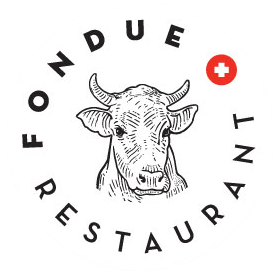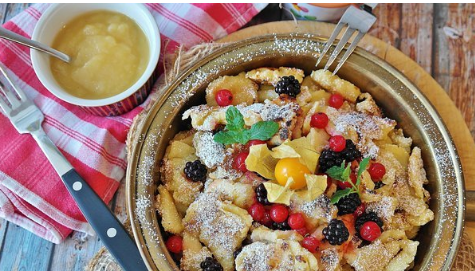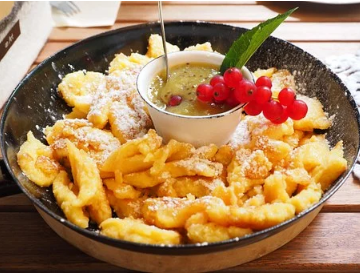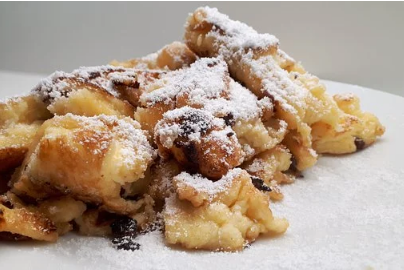In search of always the original proposals, today we have decided to present you an original recipe from Austria with an imperial flavor. When we talk about Austrian cuisine, we all know that it is a matter of tempting pleasure on a plate, of delicacies of the highest quality, masterfully executed and served with finesse.
Austria belongs to the region of the Alps. Let us introduce you to one of the representative dishes for these places – these are the pancakes called Kaiserschmarn . In the past, they cooked on farms and gained a lot of popularity in the world only when it turned out that they were the favorite delicacy of the head of state.
Nowadays, this sweet and extremely fluffy temptation is a favorite of connoisseurs of the Alpine culinary tradition and is offered in every self-respecting ski villa in the Austrian Alps , and not only there. Let’s try to explore the secrets of this Viennese delicacy.
Dessert history
As we have already hinted, the dessert takes its name from its greatest admirer – the Emperor of Austria Franz Joseph I, who had the title Kaiser. But what is his story with them?
“Schmarn “ means a dish that consists of shredded pieces (including it is possible to have the meaning of nuts, bread crusts, leftovers and even a bun).
According to one legend, the emperor Franz Joseph actually called ” schmarrn “ a dish rejected by his wife. According to her, it was not enough light dessert and would not have a good effect on her diet. The ruler ate not only his own, but also the portion of this “bulamach” , which was prepared for his wife.
Note that it is no coincidence that we said “one of the legends”. In fact, there are several different, always bizarre stories about the origin of this dish. However, they all revolve around an indisputable historical fact – the Austrian Kaiser really fell for it. And the mystique around it seems to make it even tastier.
Kaiserschmarn can be offered both for dessert and as a small snack, when we eat something sweet. We serve it with jam or marmalade and sprinkled with powdered sugar, and maybe with cream. Traditionally in Austria the pancake is eaten in the company of a plum oshav (Zwetschgenroester).
What are the main differences between a Kaiserschmarn and a regular pancake?
In Bulgaria we are most often used to making thin ethereal pancakes crêpes. Kaiserschmarn is a thicker pastry, quite similar to an omelet. The mixture is thicker, but also fluffier than the one for pancakes, which we are used to making for Saturday and Sunday.
The truth is that the decisive difference is in the number of eggs, as well as in the technique used during their mixing. If we just look at the recipe described below, we will notice that in Kaiserschmarn yolks and whites. In addition, for standard crêpes , no more than two eggs per dose of mixture are used.
Another difference between the two is that we usually serve thin pancakes, wrapped or folded with a filling of chocolate or jam inside, while in the case of Kaiserschmar, the sweet sauce is poured on the side or on the dough.
Can we cook Kaiserschmarn at home ourselves?
The dish is not as pretentious as it sounds from its name. On the other hand, in order to become a breakfast, worthy of nobles, a true Kaiserschmarn requires certain cooking skills and dexterity to be attractive.
However, you don’t need any masterful skills to do well. Remember that our goal is actually to achieve small, sweet pieces of sweet bread, and the powdered sugar sprinkled on top will erase any and any imperfections in the appearance of your creation.
Necessary products
To make a delicious Austrian pancake at home, we will need the following products:
- 3 pcs. eggs
- 1 tsp sugar
- 125 ml of fresh milk
- 100 g flour type 500
- 1 tsp baking soda
- 1 k. l. sol
- 1/2 packet of vanilla
- 100 g butter
- Raisins to taste
- Powdered sugar for sprinkling
Caution – When preparing your Kaiserschmarn, always use organic lemons. The rind of “ordinary” has a risk of containing toxins from substances used against pests and to stimulate crop growth. Another tip from us is if the eggs are small, use 4 pcs.
Method of preparation
First we divide the eggs. The yolks are mixed with the flour, and the milk and vanilla extract, sugar and salt are added to them. Beat the egg whites to a froth and mix them lightly with the rest of the dough.
Be careful not to stir for too long – just mix the products to keep as many air bubbles as possible in the dough.
It is they who give it its characteristic and irresistible fluffiness. Once the pancake mixture is ready, add a little raisins evenly and fry over low heat. You get something like a fluffy, sweet omelet. Serve it with powdered sugar on top, and why not with liquid chocolate sauce?
The most pleasant part follows – with Kaiserschmarn there is no need to tremble whether this time we will be able to turn the pancake like real professionals, or not accidentally stick it on the ceiling, for example.
For the dessert to be authentic, it must be torn into small fluffy pieces. It only takes us a few minutes depending on the level of the hob and we are ready!
The Austrian Empress Sisi has definitely exaggerated, disliking the dessert because it is high in calories. In fact, some historical evidence suggests that she may have had an eating disorder such as anorexia.
We are certainly not talking about salad or protein shake. Kaiserschmarn is certainly not keto because it contains too many carbohydrates, and it is not a superfood from which you will lose more weight than you eat.
In fact, a whole serving of it contains no more calories, no more sugars, or any other harmful substances than a packet of store-bought jam, which is even much smaller in size.
Note that in this case we use quite a small amount of sugar in the proposed recipe. If you would like the dish to be even healthier, we recommend that you use brown sugar.
Nowadays, keto versions of the dish have already been developed, but they are quite far from the original, classic Austrian recipe, which Franz Joseph I adored.





